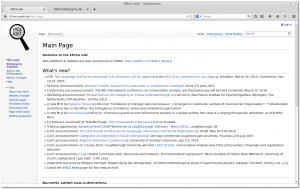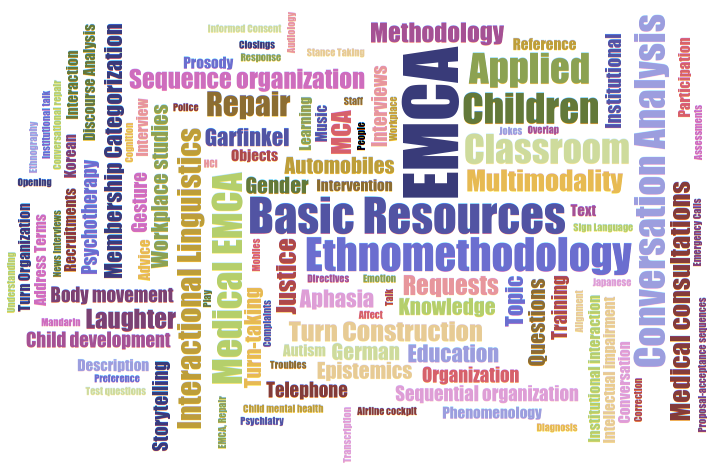This cheat sheet (PDF version) provides all the symbols you will encounter in Schegloff (2007): a useful reminder while doing an initial sequential analysis of your data. Use with caution, and remember to re-read the last chapter, as well as Schegloff (2005) beforehand. Usages are referenced with example and page numbers.
Adjacency pair labels
- F / FPP : First Pair Part
- S / SPP : Second Pair Part (2.01 p. 17)
Sequence management markers:
- 1 / 2 / 3 : subscript numbering for multi-sequence analyses e.g.: Fb1, Fb1 (5.30, p.75)
- + : more of a FPP or SPP i.e.: +F / +S (used in combination with other labels) (7.05, p. 121)
- b : base pair i.e. Fb or Sb
- pre : pre-sequence marker
- e.g. Fpre or Spre of a pre-expansion sequence (5.32, p. 77, see note 5 p. 27)
- can take b and / or numbering for multi-sequence analyses.
- ins or i : insert expansion FPPins or SPPins (can take b / numbering). (6.08, p.103 / 6.01, p.105)
- insins : nested insert expansions (can be further nested e.g.: insinsins ) (6.17, p.110)
- post : post-expansion (p. 27 note 5)
Position-specific markers:
- pre-S : a preliminary (e.g. anticipatory account) coming between F and S. (p. 69 ex. 5.19)
- preSb : a preliminary to a base sequence (p. 84 ex. 5.38)
- SCT : sequence closing third (can be used with numbering, + and design feature labels) (7.03, p.119)
- PCM : post-completion musing (7.32, p. 143)
Action labels
Obviously actions can be described in many ways, but Schegloff (2007) only uses these ones:
- off : offer (could also be req for requests (10.14, pp 213-214), ass for assessments etc. etc.)
- acc : accept prior action (5.39, p. 85)
- rej : reject prior action (5.39, p. 85)
- prerej : a pre-rejection (could be used for any action) (5.39, p. 85)
- req1 / off2 / acc2 / acc1 : numbered actions for multi/nested-sequence analyses. (5.38, p. 85)
- retr : disavowal or retraction of prior action (9.03b, p. 185)
- alt : alternative version of prior action (7.50c, pp. 166-167)
- again : reissuing a prior action (7.50b, pp. 165-166)
- redo : reworking/redoing of a prior action (7.49, pp. 163-164)
- add : addition to prior action (7.49, pp. 163-164)
Design feature labels
- up : upgrade (7.43, p. 157)
- hedge or hdg : hedge (7.50b, pp. 165-166)
- agree : agreement with preference (5.32, p. 77)
- rev : reversal of preference / type conformity (5.32, p. 77)
- cnt : counter (2.01 p.17)
References
- Schegloff, E. A. (2005). On integrity in inquiry… of the investigated, not the investigator. Discourse Studies, 7(4-5), 455–480.
- Schegloff, E. A. (2007). Sequence organization in interaction: Volume 1: A primer in conversation analysis. Cambridge: Cambridge University Press.


